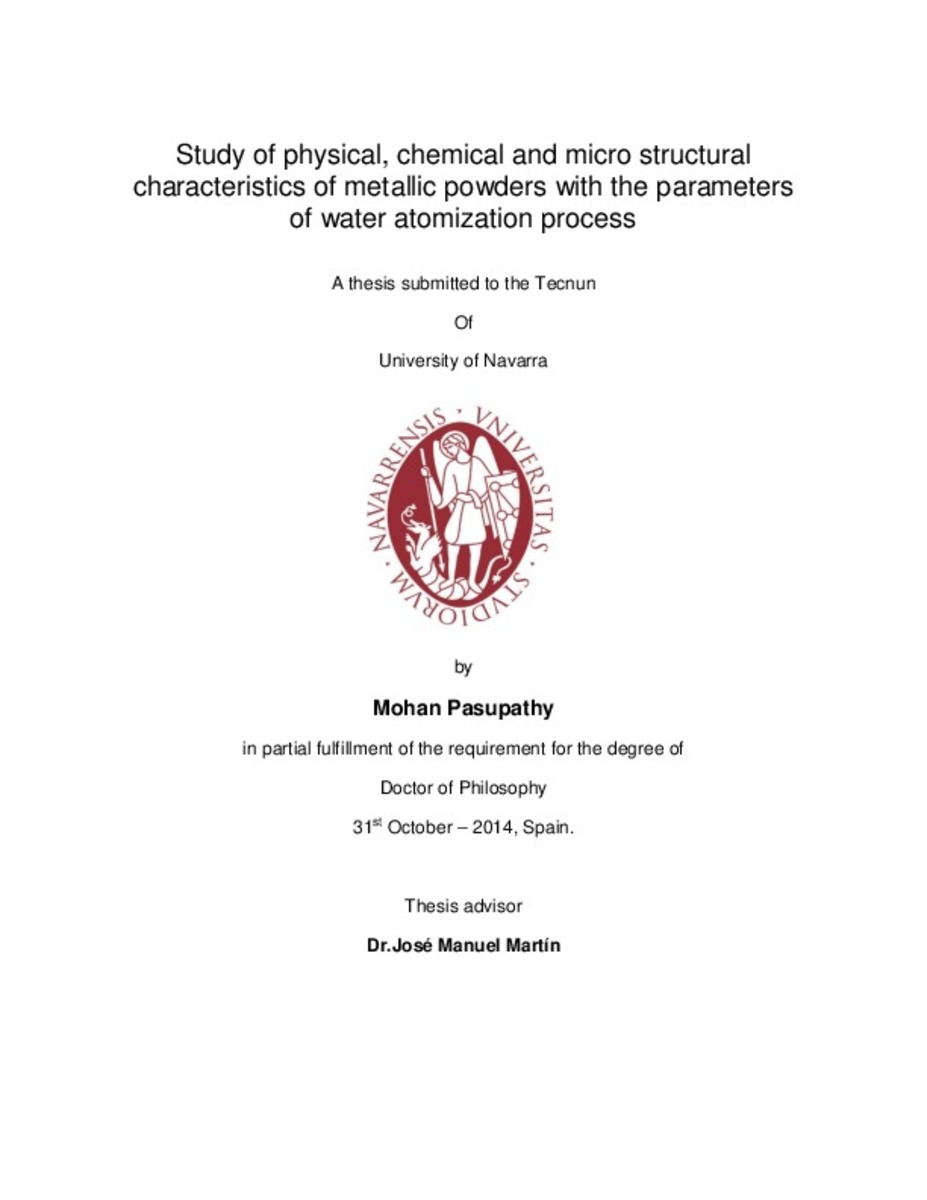Study of physical, chemical and microstructural characteristics of metallic powders with the parameters of water atomization process.
Keywords:
Water atomization.
Water pressure.
Superheat.
Bleed pressure.
Jet impact angle.
Jet Length
Defense Date:
31-Oct-2014
Publisher:
Servicio de Publicaciones. Universidad de Navarra.
Citation:
PASUPATHY, Mohan ""Study of physical, chemical and microstructural characteristics of metallic powders with the parameters of water atomization process"" Martin, José Manuel. Tesis doctoral. Universidad de Navarra. 2014
Statistics and impact
0 citas en

0 citas en

Items in Dadun are protected by copyright, with all rights reserved, unless otherwise indicated.







